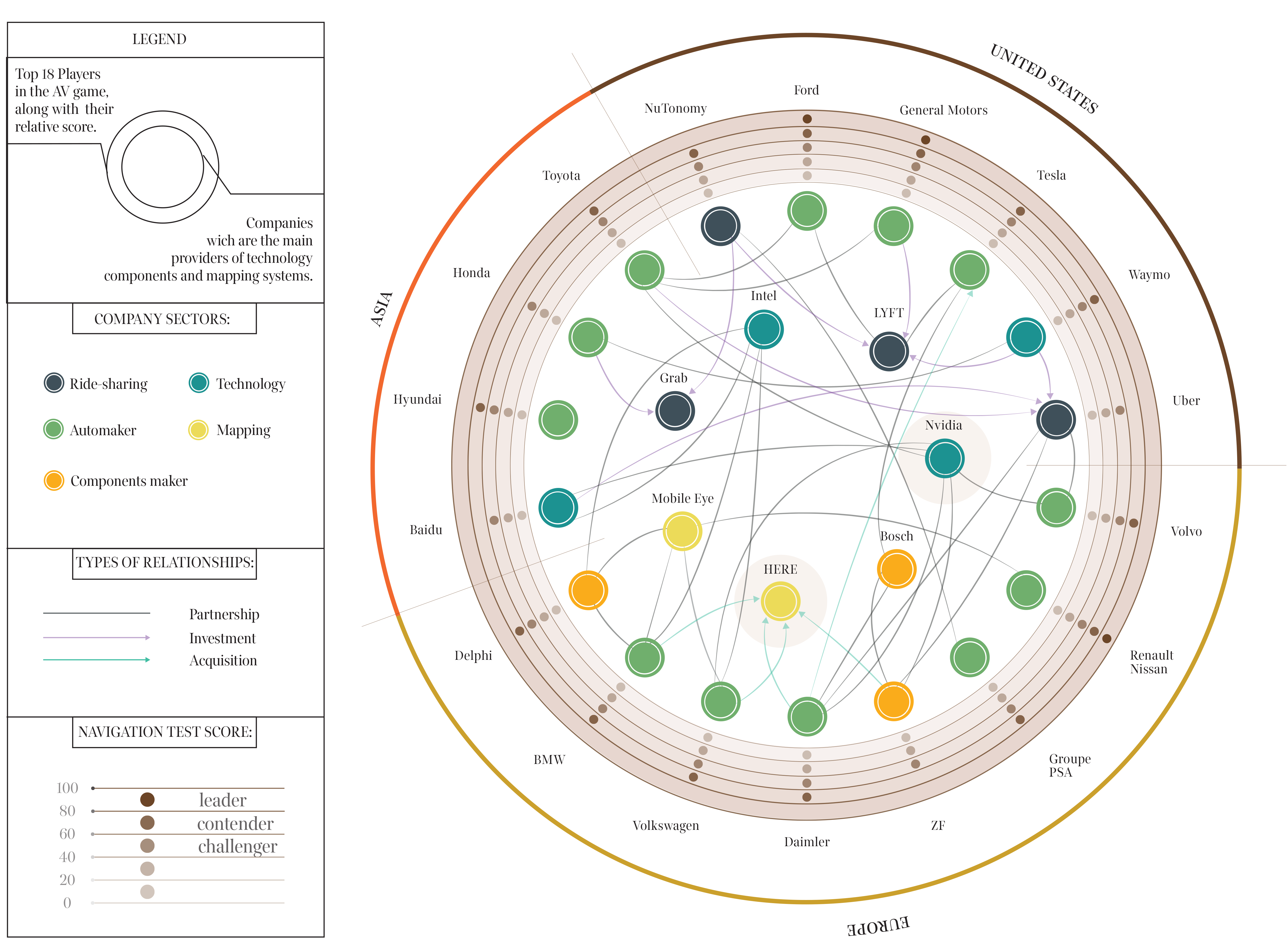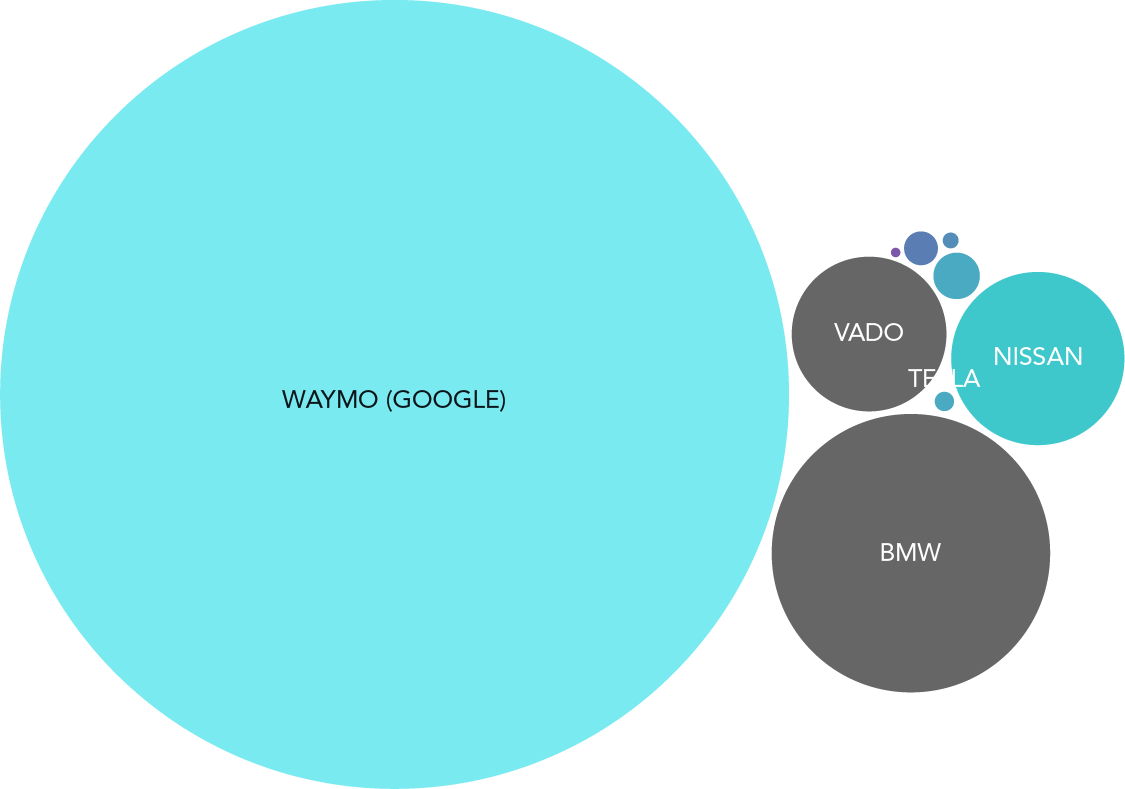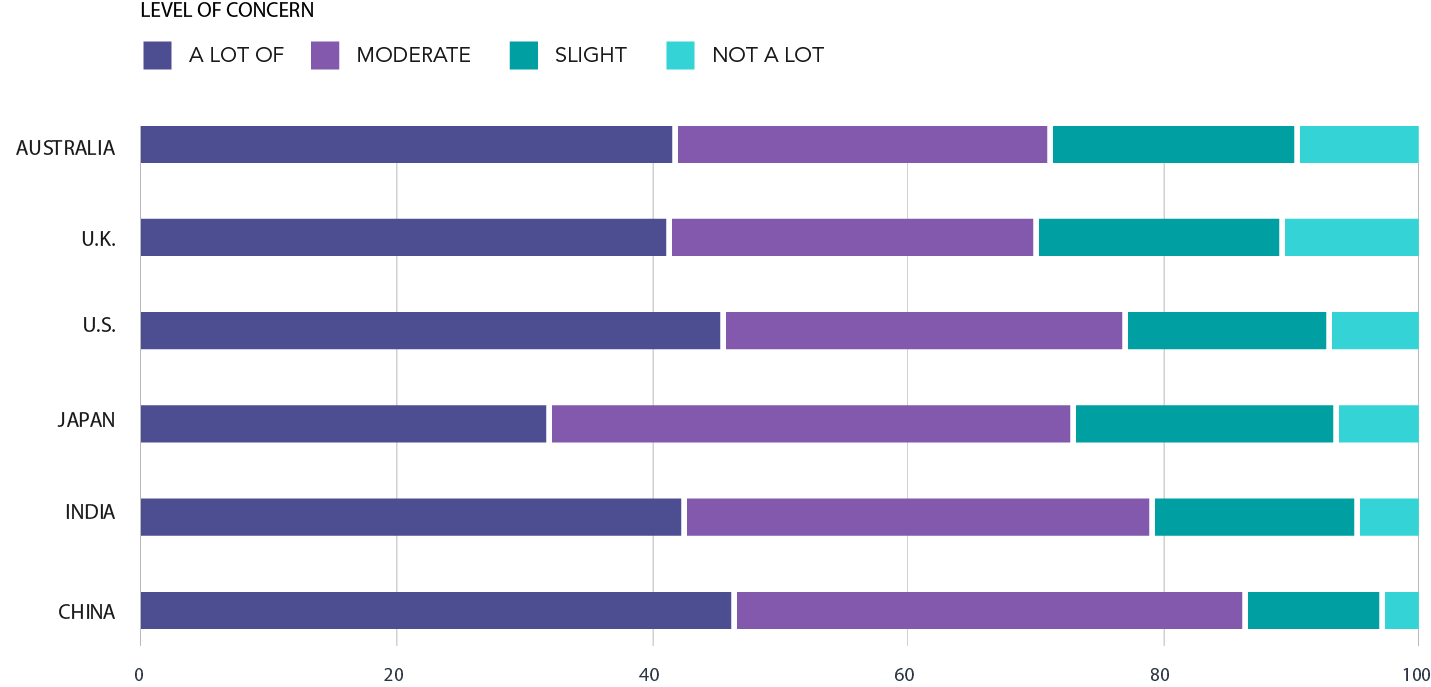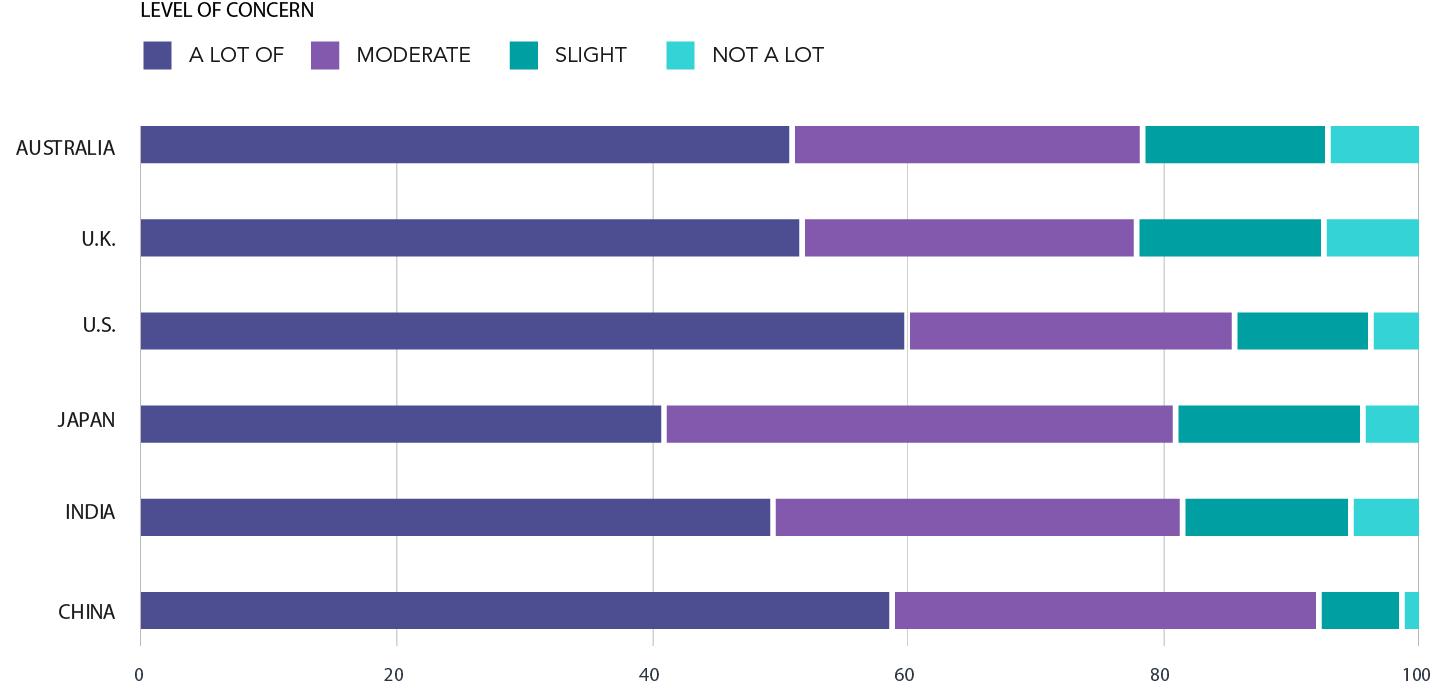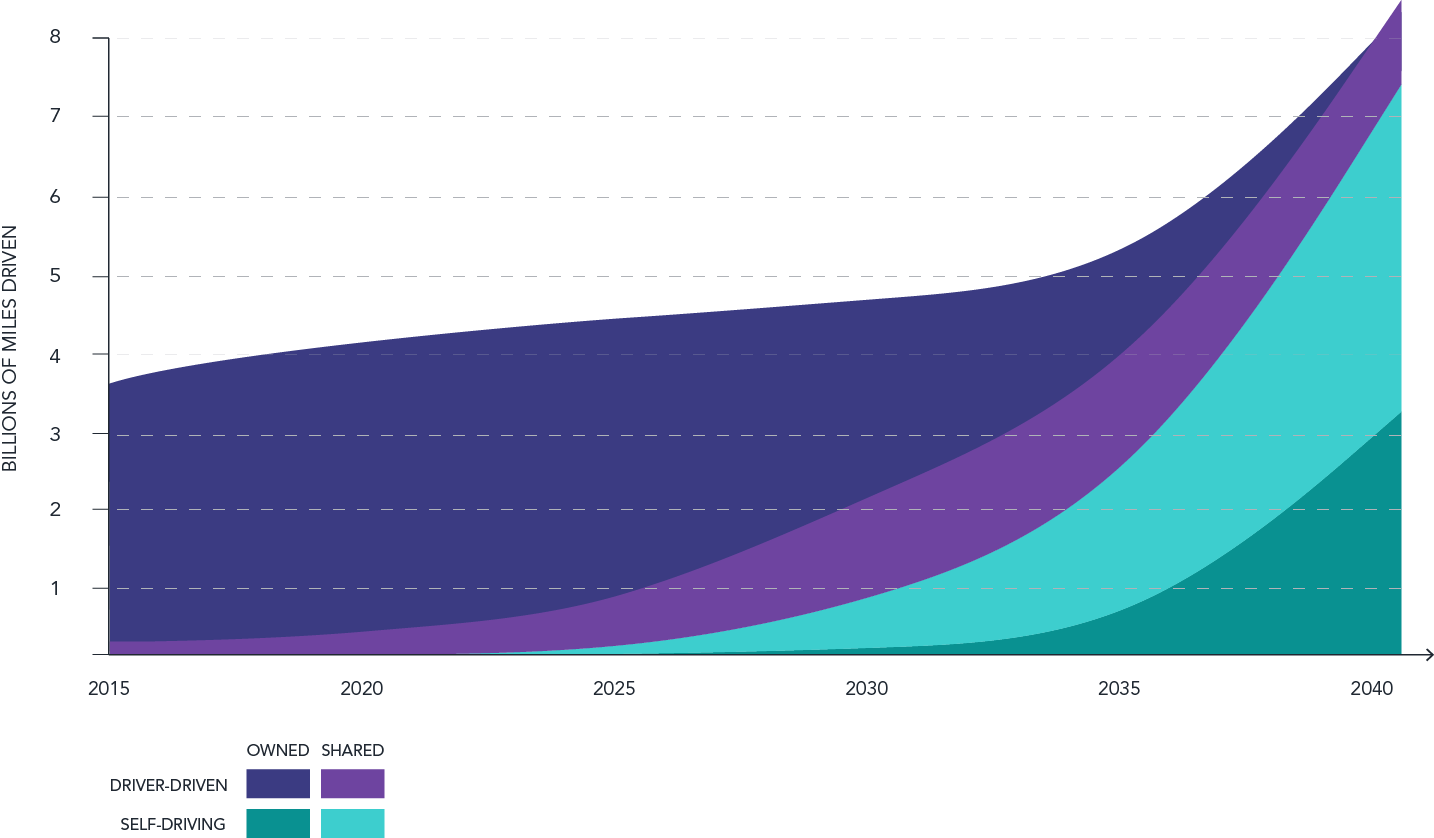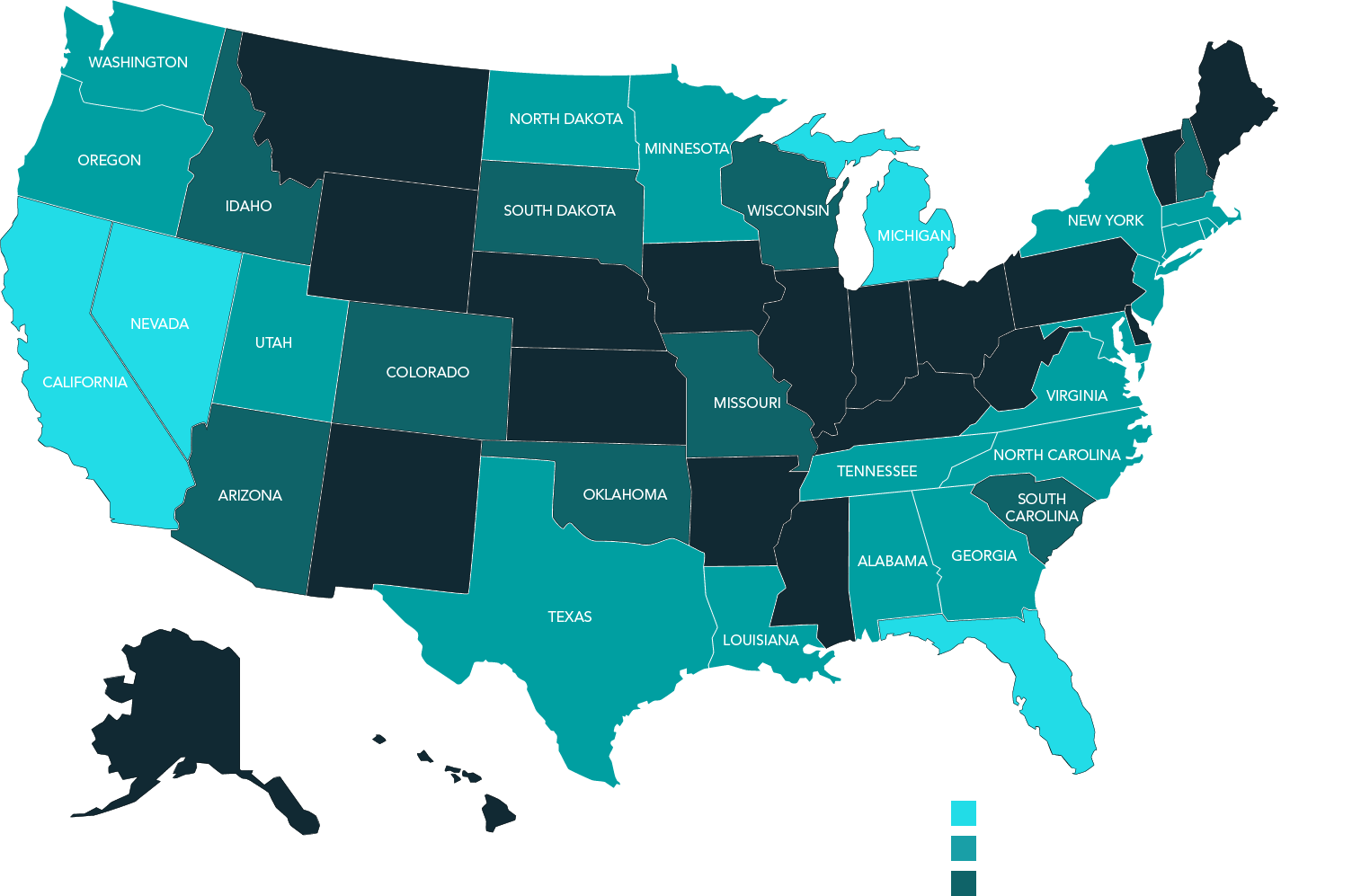PLAYERS
We took a picture of this intricate network connecting companies and start-ups from all over the globe. It's safe to say Europe, America, Japan and China will be leading the race towards this utopic future, as the companies with the most advanced technology will be, if not leaders, needed by the contenders in order to compete with each other, like we see with Nvidia. Recent studies pointed the beginning of the next decade as the turning point in the development of driverless cars: the rush-hour has come for all who have the ambition to dominate the market. Everyone is trying to assemble the dreamteam, whose strategy will be the most succesful?
We pushed our network analysis further by integrating the data from the 2017 Navigant Research Report, which outlined the 18 biggest competitors on the market by assigning a score related to the level of technological advancement and release of a fully-functioning AV in the next decade. We can see how our players have adopted different strategies.
